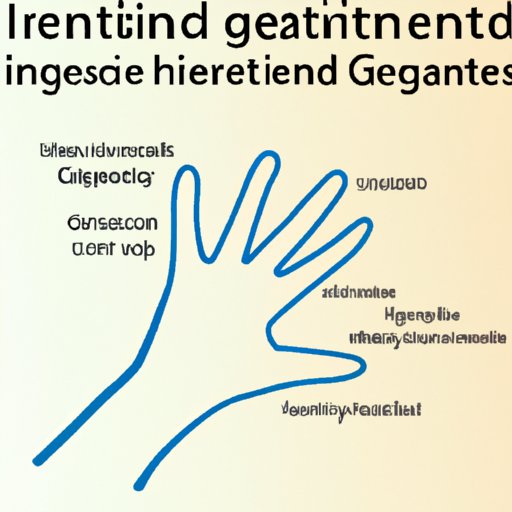Introduction
Left-handedness is a condition in which an individual prefers to use their left hand for activities such as writing, throwing objects, or using tools. It is estimated that around 10-12% of the world’s population is left-handed. This means that over 700 million people are left-handed, with the percentage being higher in some countries than others. In this article, we will explore the prevalence of left-handedness across the globe, examining the history and perception of left-handedness, exploring the reasons for its high numbers, investigating unique challenges faced by left-handed people, looking at the impact of left-handedness on society, and debunking common myths about left-handedness.
Examining the History of Left-Handedness and its Changing Perceptions
Throughout history, left-handedness has been viewed differently in different cultures and societies. In Ancient Greece, it was believed that left-handedness was a sign of evil. Throughout the Middle Ages, left-handedness was seen as a sign of weakness and clumsiness. However, in some cultures, left-handedness was seen as a sign of power and strength. For example, in Native American culture, left-handedness was seen as a blessing and a sign of spiritual power. In modern times, left-handedness is no longer viewed as a negative trait, with many left-handers embracing their identity and even taking pride in it.
Exploring the Reasons for the High Number of Left-Handers
There are a number of theories as to why there are so many left-handers in the world. One of the most widely accepted theories is that it is due to genetics. Studies have shown that there is a strong genetic component to left-handedness, with the likelihood of a person being left-handed increasing if one or both of their parents are left-handed. Additionally, environmental factors such as prenatal exposure to hormones can also play a role in determining handedness. Other theories suggest that left-handedness is caused by a combination of genetic and environmental factors.
Investigating the Unique Challenges Faced by Left-Handed People
Left-handed people may face a number of unique challenges in their everyday lives. For example, they may struggle with tasks that are designed for right-handed people, such as using scissors or writing in a notebook. Additionally, they may face educational challenges, such as having difficulty reading from a book designed for right-handers. Despite these challenges, many left-handed people find ways to adapt and overcome them.
Comparing Left-Handedness Across Different Cultures
The perception and acceptance of left-handedness varies greatly across different cultures. In some cultures, left-handedness is still seen as a negative trait, while in others, it is more accepted. Additionally, there are some cultures where left-handedness is embraced and even celebrated. In India, for example, left-handedness is seen as a sign of creativity and intelligence. In Japan, it is seen as a sign of good luck. As attitudes towards left-handedness continue to evolve, the level of acceptance and understanding of left-handedness will likely increase.
Looking at the Impact of Left-Handedness on Society
The increased visibility and acceptance of left-handedness in recent years has had a positive effect on society. Media representation of left-handedness has improved, with more left-handed characters appearing in films, television shows, and other media. Additionally, awareness of the unique challenges faced by left-handed people has grown, leading to greater efforts to accommodate them in everyday life. Finally, the positive impacts of left-handedness have been highlighted, with studies showing that left-handers may be better at certain tasks such as sports and music.
Debunking Common Myths About Left-Handedness
Despite the increased awareness and acceptance of left-handedness, there are still many misconceptions about it. For example, there is a common belief that left-handers are more intelligent than right-handers. However, research has shown that this is not true, and that there is no correlation between handedness and intelligence. Additionally, outdated beliefs about left-handedness still persist in some cultures, such as the belief that it is caused by supernatural forces. These beliefs are unfounded and should be debunked whenever possible.
Conclusion
In conclusion, left-handedness is a common condition that affects millions of people around the world. The prevalence of left-handedness varies across cultures, with some cultures being more accepting of it than others. Additionally, left-handed people may face unique challenges in their everyday lives, but these can be overcome with practice and adaptation. Finally, despite the increased awareness and acceptance of left-handedness in recent years, there are still many misconceptions about it that need to be debunked. Further research into the causes, effects, and implications of left-handedness would help to better understand this condition and its impact on society.


